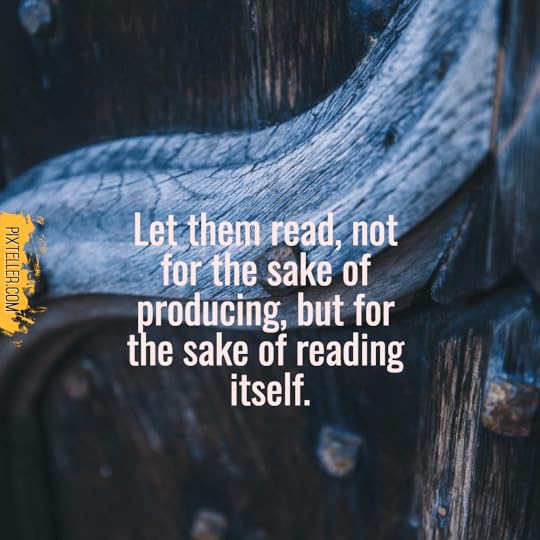On Reading Tasks

I used to ask students to write in their reader’s notebook for a few minutes every day after they finished reading. Some days they could write about whatever, other days I had a specific prompt. Just four minutes because four always seems less daunting than five. Just four minutes to give me a feel for what you are thinking. Just four minutes to let me know if you are reading.
The protests started quickly. Slow steps to get their reader’s notebooks, lengthy pencil sharpening sessions, bathroom breaks and long stretches. Kids who needed to read just one more page even though it cut into their writing time. Then louder, more vocal, “Do we have to, Mrs. Ripp?” “I don’t know what to write…” “What’s the prompt again?” I even had a child tell me that they thought it was stupid. But I knew best, so we soldiered on.
Their responses were mediocre at best. Short burst of thinking. Not a lot of depth. Surface level understanding, connections, and even writing. I was baffled at how poorly they did., had they really misunderstood all of my instruction? Did they really not understand theme?
On the end of the year survey, I asked them, “What is the one thing you wish Mrs. Ripp would never do again?” Their response was resounding; our reader’s responses. “Please don’t put other kids through that, Mrs. Ripp!” one child wrote in the margin. “It made me hate reading!” another child confided. I knew they disliked it, but the sheer quantity of kids that, without consulting each other, had put this four minute part of our class on the survey was astounding. I had known all along, but still…surely this little check for understanding was just that; little. Insignificant, and yet the damage it was doing to a child’s reading life was anything but.
This happens all the time in our reading classrooms; small ideas, insignificant extra tasks, minor routines that end up doing major damage. We assume that kids will be okay, they are resilient, but we forget that for many their reading identities are not well formed yet. That it doesn’t take much to knock them off course. That it is not just because they dislike reading because they never found the right book, but because we have created reading classrooms where there sometimes is very little reading, but very many tasks. Yes, kids need to process their reading. Yes, kids should grow from their reading, but that doesn’t mean always writing. That doesn’t mean always producing something. That doesn’t mean that we squeeze in a short response thinking it will help them in the long run, no matter the damage it does now.
We forget that just reading is work. That for some kids it takes incredible mental prowess to figure out the words, to visualize the story, to comprehend what is going on. They are tired after they read. We forget that reading can be solitary. That as adults we often sit in silence after we have read or we think of who we would like to share this book with. How we would like to proceed. I know very few adults that write a summary every time they read or even write down their pages. So why do our reading decisions look so different in our classrooms?
So what tasks do you have attached to reading? What are you asking kids to do when they are reading? Do they get stretches of uninterrupted time to just read? Do they get to choose what to do when they do read or when they are done? Have you asked students what they would like to do or what you need to change?
Most days, my students “just” read. Sometimes I ask them to speak to a peer about their book, sometimes I do ask them to answer a question, sometimes I ask them to reflect on their reading, either out loud or on paper, sometimes I ask them to just think. The key here is “Sometimes…” not always or often. Not every day, not always in writing. I tell them that when I ask them to do something, it matters, and because we do it so rarely, to most it does. They take their time, they do the work because they know that this is a rarity rather than an everyday occurrence.
I wish I would have stopped our four minutes earlier. I wish I would have listened to the students, rather than thought I knew best. I wish I would have asked them sooner, what would you like to do when you finish reading and then listened to their answers. I wonder if they would have answered much like Thea, our eight-year-old, did when I asked her, “When you finish a book, what would you like to do?”
She looked at me confused, “What do you mean?”
“What kind of thing would you like to do when you have finished a book?”
She looked me right in the eye and said, “Start another book…” and she walked away.
So let them read, not for the sake of producing, but for the sake of reading itself.
PS: Join the conversation in our Passionate Readers Book Club on Facebook.
If you like what you read here, consider reading my newest book, Passionate Readers – The Art of Reaching and Engaging Every Child, out August 2017. This book focuses on the five keys we can implement into any reading community to strengthen student reading experiences, even within the 45 minute English block. If you are looking for solutions and ideas for how to re-engage all of your students consider reading my very first book Passionate Learners – How to Engage and Empower Your Students. Also, if you are wondering where I will be in the coming year or would like to have me speak, please see this page.
Filed under: being a teacher, Literacy, Reading, Reading Identity, student choice, Student dreams





